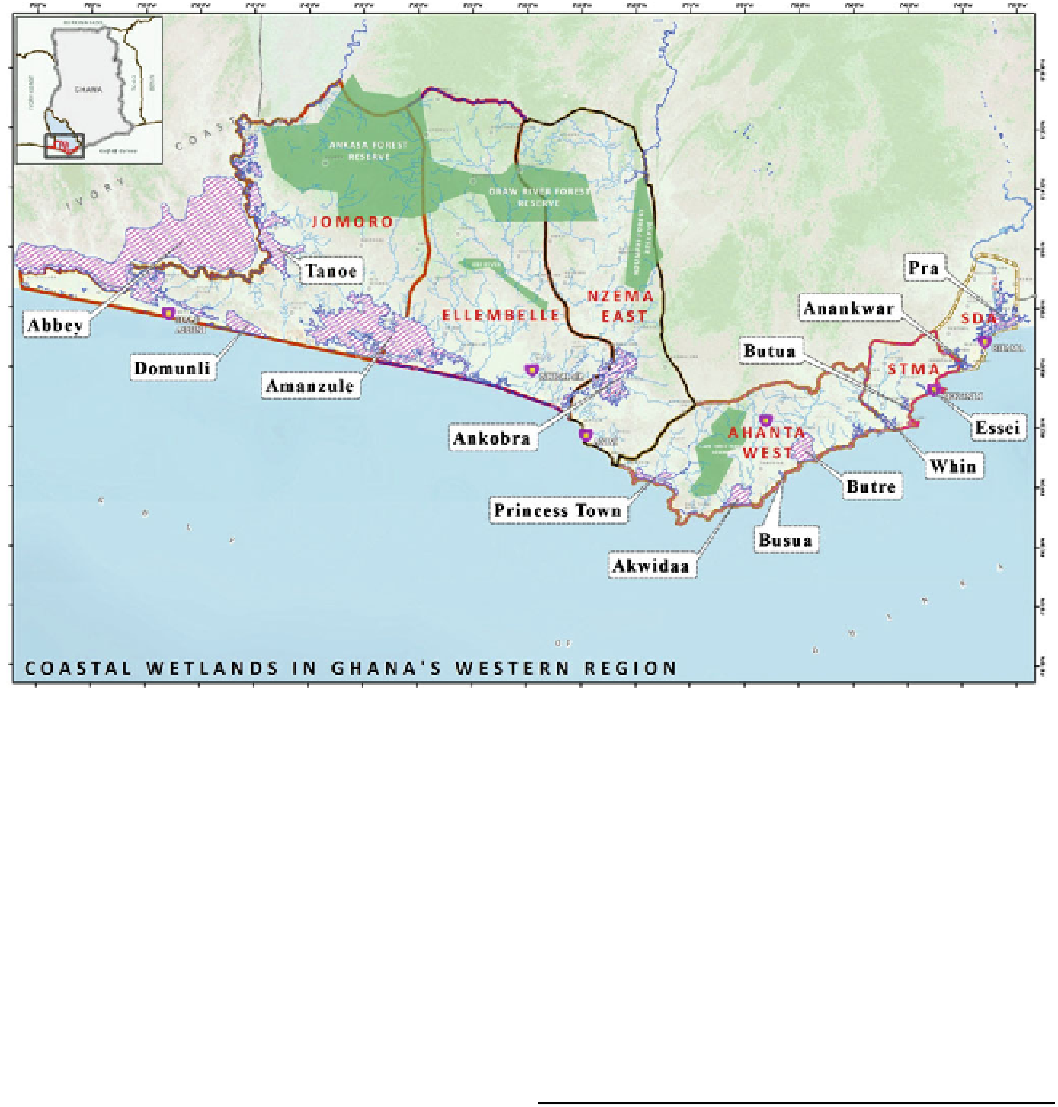Environmental Engineering Reference
In-Depth Information
Fig. 1
Map of wetlands distribution in Western Region (Greater Amanzule covers wetlands from Ivory Coast border to Ankobra River)
Convention. Another important biodiversity characteristic
of the site is that the coastal sandy beaches are important
turtle nesting sites. Species recorded include the leatherback
turtle, Dermochelys coreacea (common); green turtle,
Cheloniamydas (common); olive ridley turtle, Lepidochelys
olivacea (most common); and hawksbill, Eretmochelys
imbricate (rare) (NCRC/Beyin Beach Resort
2000
).
Increasing development trends place these wetlands and its
biodiversity at further risk. A particular concern is that the
wetlands, which are important nursery grounds for many
demersal fish species and habitat for birds, mammals and
reptiles, are becoming increasingly vulnerable to degrada-
tion from development.
production has suffered due to Cape Saint Paul wilt disease,
which is destroying coconut plantations. Food crop pro-
duction, on the other hand, is quite low, contributing less
than 8 % to national production—which may be due to the
lower revenues when compared to other crops (cocoa,
coconut, etc.). The six major food crops cultivated in the
area are maize, rice, cassava, yam, cocoyam and plantain.
Activities within the mangrove areas include fishing, local
gin processing, charcoal production, small-scale farming of
crops such as coconut, oil palm, cassava, cocoa and plan-
tain, and small-scale trading.
Data and Information Collection and Analysis
Socio-Economic Environment and Human Activities
Generally, the foundation of the economy in Western
Region of Ghana and particularly the goods and services
traded can be summarized as fish, port services, cocoa, gold,
bauxite, manganese, tourism, timber and oil and gas (a new
development trend). There is a strong agricultural base, with
the agricultural sector employing nearly 60 % of the eco-
nomically active population in the region. The main crops
harvested are rubber, coconut and cocoa, accounting for the
largest
Both primary and secondary data collection approaches
were used for the study. A combination of stakeholder
discussions and on-the-ground surveys was used. A partic-
ipatory approach was adopted by interactive discussion of
basic issues during various consultative meetings and
interviews organized with local institutions to gather
information about the governance of these wetlands and to
discuss the potential for developing a blue carbon project in
the
share
of
national
production.
Recently,
coconut
region.
The
institutions
included
local
authorities

Search WWH ::

Custom Search